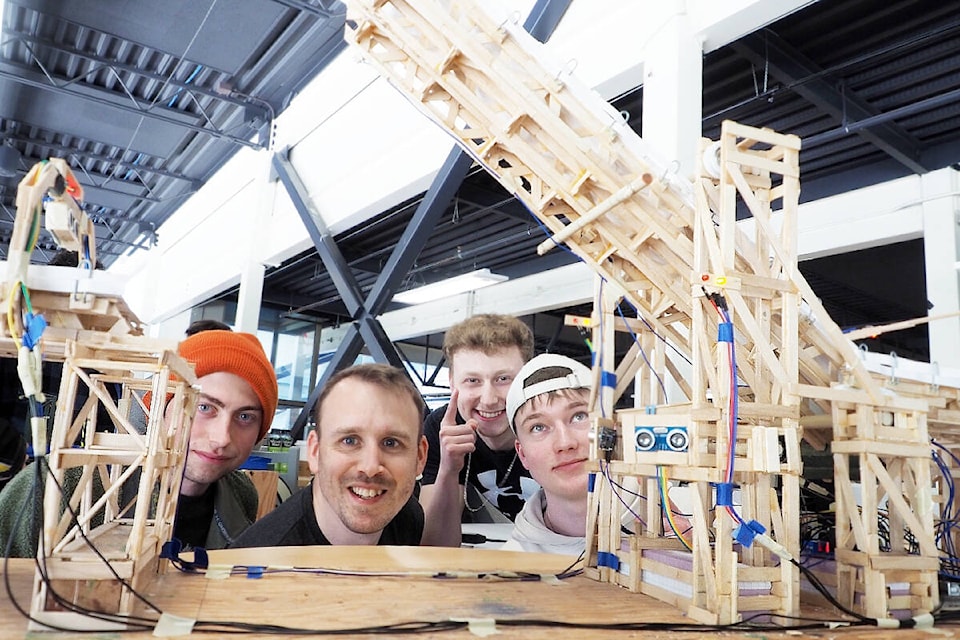First-year engineering design students at Vancouver Island University have been exploring ways to move people through a fictitious town.
The design teams demonstrated several movable bridge types during a challenge at VIU’s upper cafeteria Friday, April 12.
The students were tasked with designing bridges that could move traffic across a canal, while also letting marine traffic pas underneath. Each student engineering team represented different firms ‘competing’ for a project contract in the fictional city of Trantor.
The bridges not only had to be able to function mechanically, but also had to incorporate automatic activation and safety features that allowed them to detect when a water craft was approaching, activate warning signal lights to alert traffic the bridge was about to open, detect if there were any pedestrians or traffic on the bridge span before opening, detect when watercraft had passed through, and close the span again automatically.
Most bridges the student created were either the vertical lift type, in which cables lift and lower the bridge deck as a level platform, or the Bascule-type bridge that swings a section of the bridge span upward like a draw bridge.
One team selected to build a swing bridge, a design that swings the bridge deck so that it is parallel to the waterway when open.
“This canal is a major route for shipping boats, so with a swing bridge there’s no maximum vertical clearance for the boats. With any other design, you’d have that ‘maximum height allowed,’ where with a swing bridge you can have a tall a boat as you desire,” said Zack Lamoureux, a member of the team that built the model.
“Initially, I thought it was the most ridiculous thing ever,” said Alex Cloakey, another team member. “I didn’t think it made any sense. I’d never seen them before … I started looking into it and [thought], this is really feasible … They are proven and they are reliable.”
The teams designed and built their models’ mechanical and structural components and electronic control circuits.
Their reward for creating the most successful bridge designs?
“You pass,” Cloakey said.
READ ALSO: VIU puts on its first information technology student project fair
